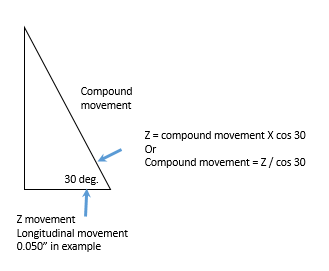- Joined
- Jul 11, 2014
- Messages
- 496
I bremember me many years ago while working in the Jax Shipyard Machine shop (non existent any longer, so that's how old I am), cutting double and triple threads on valve stems. I thought I remember doing this by which number/quadrant/etc on the thread dial I engaged the feed. I can't remember exactly how I did this and which 'number' on the dial I used.
I may be wrong but somebody out there must know.
With this method I did not have to rotate the workpiece, or move the compound or do any different set ups. Just remember which two or three spots on the dial I needed to engage.
I may be wrong but somebody out there must know.
With this method I did not have to rotate the workpiece, or move the compound or do any different set ups. Just remember which two or three spots on the dial I needed to engage.


